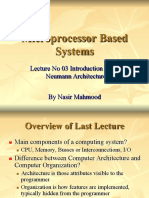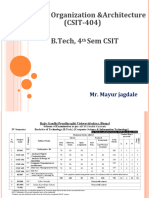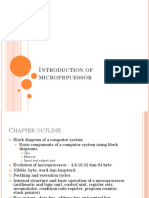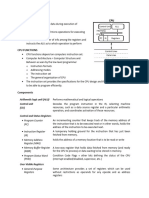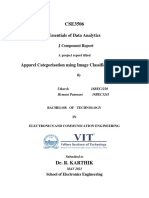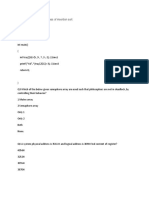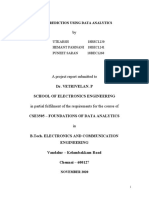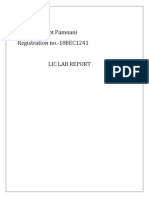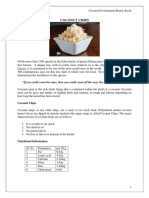0% found this document useful (0 votes)
319 views11 pagesCPU Data Path Essentials
The data path of a processing unit includes components like the ALU, registers for temporary storage, and circuits for data movement and operations. Registers can be categorized as user-visible registers that programmers can reference, like general purpose and address registers, or control and status registers used internally for control functions. Examples of control registers include the program counter, instruction register, and memory address register. Condition codes stored in registers indicate results like carry, zero, or overflow from operations.
Uploaded by
WINORLOSECopyright
© © All Rights Reserved
We take content rights seriously. If you suspect this is your content, claim it here.
Available Formats
Download as PDF, TXT or read online on Scribd
0% found this document useful (0 votes)
319 views11 pagesCPU Data Path Essentials
The data path of a processing unit includes components like the ALU, registers for temporary storage, and circuits for data movement and operations. Registers can be categorized as user-visible registers that programmers can reference, like general purpose and address registers, or control and status registers used internally for control functions. Examples of control registers include the program counter, instruction register, and memory address register. Condition codes stored in registers indicate results like carry, zero, or overflow from operations.
Uploaded by
WINORLOSECopyright
© © All Rights Reserved
We take content rights seriously. If you suspect this is your content, claim it here.
Available Formats
Download as PDF, TXT or read online on Scribd
/ 11




















